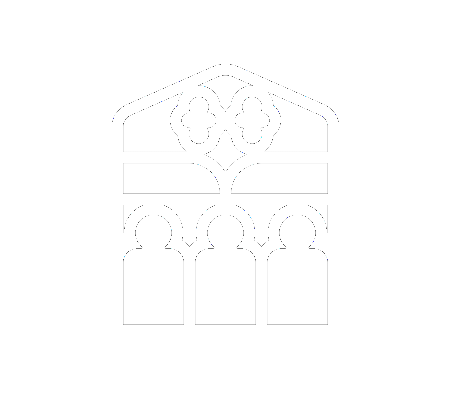If you’re building a leadership development programme, then Cumberland Lodge is the perfect place to host it.
You can find us among the beauty of Windsor Great Park, which is an equally remote and accessible location. What’s more, our building is steeped in history, being built in the 17th century and having been home to many significant figures over the years.
In addition to the historical interest of the space, booking with Cumberland Lodge also enables you to support a charitable mission. This is because we’re a social enterprise with a core focus on education. As a result, booking our space allows you to benefit your team while also doing your bit for a greater educational initiative.
While Cumberland Lodge doesn’t actively run leadership development programmes, we have hosted many in our time. As a result, we’re well-equipped to offer our insight on how to build and run a leadership development programme.

What is a leadership development programme?
A leadership development programme is a structured initiative designed to improve the leadership capabilities of those within an organisation. With the help of these programmes, organisations are able to identify, develop, and retain talent through the enhancement of skills, knowledge, and behaviours to lead effectively. Within leadership development programmes, different levels can be catered to, ranging from emerging leaders to senior executives. As a result, these programmes can be employed across all manner of organisations.
Types of leadership development programmes
Emerging leader programmes – These programmes are geared towards employees showing potential for leadership roles, focusing on fundamental skills, such as self-awareness and team management.
Mid-level leader programmes – These programmes are aimed at managers already in leadership positions who are looking to refine their skills and take on more responsibility. Strategic thinking, cross-functional leadership, and advanced communication are just some of the areas of discussion that might arise.
Senior leader programmes – These programmes are designed for senior executives to work on high-level strategic leadership, innovation, and transformational leadership.
Custom leadership programmes – Not every organisation requires a one-size-fits-all solution, and that’s where custom leadership programmes come in.
What should be included in an effective programme?
Skill development – A leadership development programme needs to equip attendees with decision-making, strategic thinking, emotional intelligence, conflict resolution, effective communication, and various other vital skills.
Mentorship and coaching – It’s important that attendees are given the guidance, feedback, and support needed to thrive.
Experiential learning – Simulations, role-playing, and project-based learning are just some of the valuable hands-on experiences that these settings can provide.
Self-assessment tools – Self-assessment is essential for developing self-awareness, which is crucial for personal growth.
Workshops and seminars – Workshops and seminars give attendees an idea of industry trends, allowing them to make informed leadership decisions.
Networking opportunities – These programmes provide great opportunities for professionals to build relationships, share experiences, and learn from one another.
Designing a leadership development programme
For a leadership development programme to be effective, it needs to be thoughtfully designed. The following steps will help you ensure that your programme achieves your desired result:
Identify objectives – It’s important to establish exactly what you wish to achieve via the programme.
Assess current leadership – A leadership assessment will allow you to identify any strengths, gaps, and potential candidates for the programme.
Develop a curriculum – In order to address the needs of your organisation, you’ll need to develop a curriculum of various learning methods that work for different learning styles.
Select participants – Your employees’ potential, current performance, and alignment with the programme’s objectives are all good indicators of whether they’re a good fit.
Allocate resources – Trainers, materials, and budget are just some of the resources you’ll need to bring the programme to life.

Leadership development programme framework
The assessment phase – Initially, you need to assess the participants’ existing leadership skills and provide feedback.
The development phase – The next step is to put the training modules in place, such as the workshops and experiential learning activities from the curriculum.
The application phase – Next, participants need to be given the opportunity to put their learning into action via real-world projects, assignments, and role rotations.
The evaluation phase – Then comes the time to measure how effective the programme was, using feedback, performance metrics, and post-programme assessments.
Continuous improvement – From the data you gathered in the evaluation phase, you can continue to refine the programme for the future.
Goals of leadership development programmes
Enhance leadership skills – First and foremost, these programmes teach attendees to lead effectively and drive organisational success.
Increase employee engagement – Secondly, these programmes are designed to create a culture of continuous learning and development, resulting in improved employee morale and engagement.
Build a leadership pipeline – With the help of a leadership development programme, you can ensure that there are qualified individuals readily available to step into new roles as and when they’re needed.
Improve organisational performance – Decision-making, innovation, and strategic innovation can all be improved via strong leadership.
Retain top talent – Investing in employee development boosts their loyalty and reduces turnover.
How to measure a programme’s success
Participant feedback – Surveys and interviews can be used to assess how participants perceive the programme.
Performance metrics – By tracking changes in your participants’ performance, you can determine whether the programme has been worthwhile.
Retention rates – You can determine the programme’s impact on employee loyalty by paying close attention to retention figures.
Career progression – You might also look at how participants of the programme progress in the organisation.
Organisational impact – Improved team performance, higher engagement levels, and better business outcomes are just some of the impacts that you’ll hope to see across your organisation.
Return on investment – Hopefully, the programme will leave you with both tangible and intangible benefits that you can identify to assess your return on investment.

Host your leadership development programme at Cumberland Lodge
Look no further than Cumberland Lodge to host your leadership development programme. You can learn more about our buildings and facilities here or get in touch to learn more.

